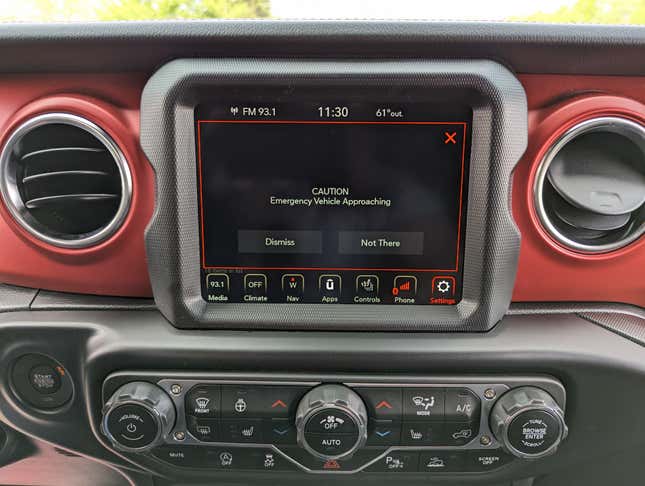The Future Of Connected Cars Starts With Emergency Vehicle Detection

Photo: Stellantis
If you own a late-model Stellantis vehicle, you might notice something odd. A warning may pop up on your center screen, your radio or nav covered by a single black box with two lines of text: “CAUTION” “Emergency Vehicle Approaching.” Fifteen seconds later, you start hearing sirens and seeing lights — there are emergency vehicles approaching. How did the car figure it out before you did?
The Most Frustrating Features In Cars
The answer has nothing to do with light sensors or microphones. Instead, it relies on cloud-based software for tracking emergency vehicles. It’s called Hazard Enhanced Location Protocol, or HELP, and it alerts nearby vehicles when an ambulance, fire truck, or other emergency vehicle needs to get by. It’s an early step into the connected world of vehicle-to-everything communications, but where do we go from here?

Photo: Stellantis
V2x is often discussed alongside self-driving initiatives, with the goal of making the whole job easier — your autonomous car doesn’t need to immediately respond to a passing ambulance if it can learn about it in advance and prepare its actions accordingly. But it’s also helpful for us humans behind the wheel, giving us some extra warning to turn down that Evanescence before the sirens catch up, to ensure you hear them. Not that that’s something I’ve ever struggled with.
The V2x dream is a world where everything is connected to its cloud ecosystems: Traffic signals, cars, crosswalks, parking spaces. Maybe we’ll one day get there, to a point where my nav system can route me through the fewest red lights and into the garage with the most available parking spaces, but that’s a ways off. For now, early warning about oncoming sirens is appreciated. It’ll help make sure Amy Lee doesn’t drown out the next one.



